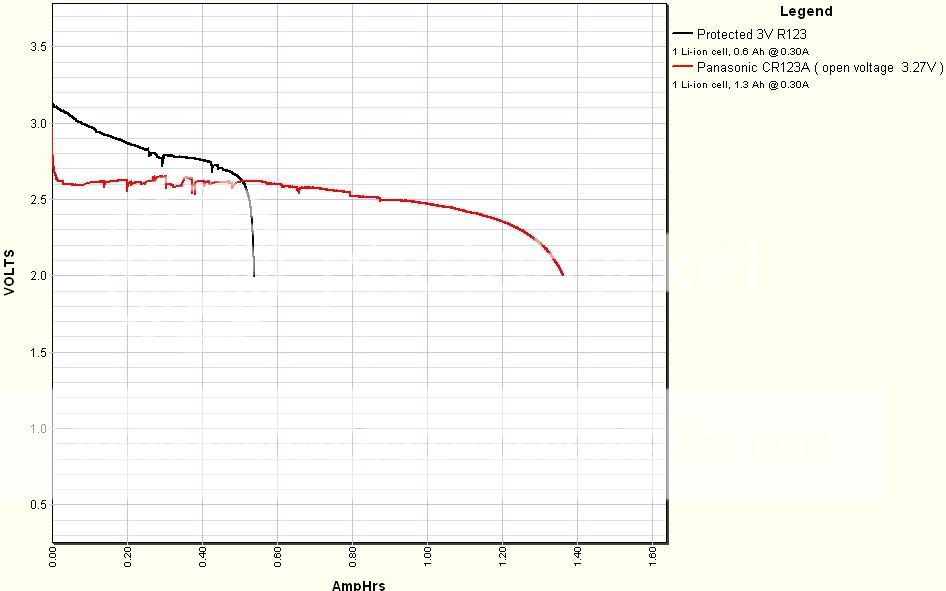joshua5732
Newly Enlightened
- Joined
- Dec 14, 2005
- Messages
- 12
In my quest to obtain free lumens for my Gladius, I have spent and wasted nearly $100. These are my stories...
Batteryspace.com - 0300 Hours 15 December 2005
Late at night or early in the morning, I was typing away, researching and hunting for "free lumens." Little known to me at the time, harnessing the sweet power would not come easily. That fateful night I found myself scouring in the darkest corners of the internet, hoping to see 85 lumen lights at the end of the tunnel. I purchased some RCR123As with a charger from Batteryspace.com, and waited days upon days for the $40 package to arrive. Once it did, I glanced inside the box, hoping to see the little Lithium-ion cells that would end my lifelong quest! I charged up the batteries, but there was something in the air... I dove for my multi-meter, and tested the cells! I found only what I was fearing, that the so-called 3.0V regulated cells were indeed not regulated! The 4.2V monster was among us! I could not place these in my dear Gladius, for the 7V circuit limit would not have it! Chapter one of my hunt had ended unsuccessfully, and I was hoping that the 4.2V monster would never again be seen, but I was most definitely mistaken...
e-lectronics.com - 1400 Hours 27 December 2005
With more rest, I expected success. I typed as I griped, and came upon an interesting scene! I looked and looked, and found something clean! I ordered more cells, that were supposed to work! On the website it did say, will work with Gladius! I bought them and then got them soon after, however the cloud of distrust was still above my head! Again I dove for the meter, expecting 3.0V! But what did I see? Oh my! 4.2V! The monster lunged, trying to destroy my beloved $250 light, but I restrained it! I slayed the dragon! Those cells would not enter my light!
So I bought some primary batteries.
THE END!!
Batteryspace.com - 0300 Hours 15 December 2005
Late at night or early in the morning, I was typing away, researching and hunting for "free lumens." Little known to me at the time, harnessing the sweet power would not come easily. That fateful night I found myself scouring in the darkest corners of the internet, hoping to see 85 lumen lights at the end of the tunnel. I purchased some RCR123As with a charger from Batteryspace.com, and waited days upon days for the $40 package to arrive. Once it did, I glanced inside the box, hoping to see the little Lithium-ion cells that would end my lifelong quest! I charged up the batteries, but there was something in the air... I dove for my multi-meter, and tested the cells! I found only what I was fearing, that the so-called 3.0V regulated cells were indeed not regulated! The 4.2V monster was among us! I could not place these in my dear Gladius, for the 7V circuit limit would not have it! Chapter one of my hunt had ended unsuccessfully, and I was hoping that the 4.2V monster would never again be seen, but I was most definitely mistaken...
e-lectronics.com - 1400 Hours 27 December 2005
With more rest, I expected success. I typed as I griped, and came upon an interesting scene! I looked and looked, and found something clean! I ordered more cells, that were supposed to work! On the website it did say, will work with Gladius! I bought them and then got them soon after, however the cloud of distrust was still above my head! Again I dove for the meter, expecting 3.0V! But what did I see? Oh my! 4.2V! The monster lunged, trying to destroy my beloved $250 light, but I restrained it! I slayed the dragon! Those cells would not enter my light!
So I bought some primary batteries.
THE END!!


